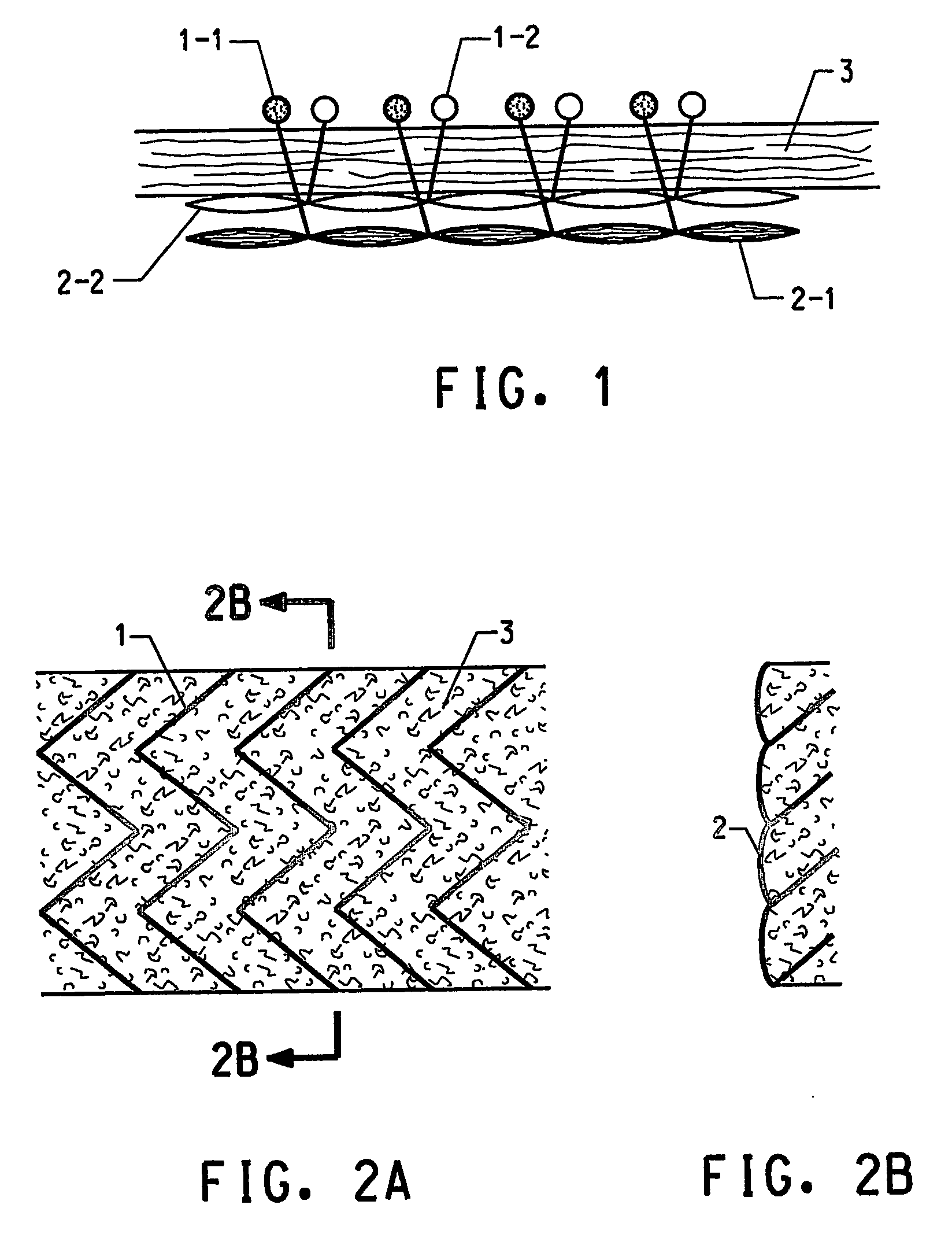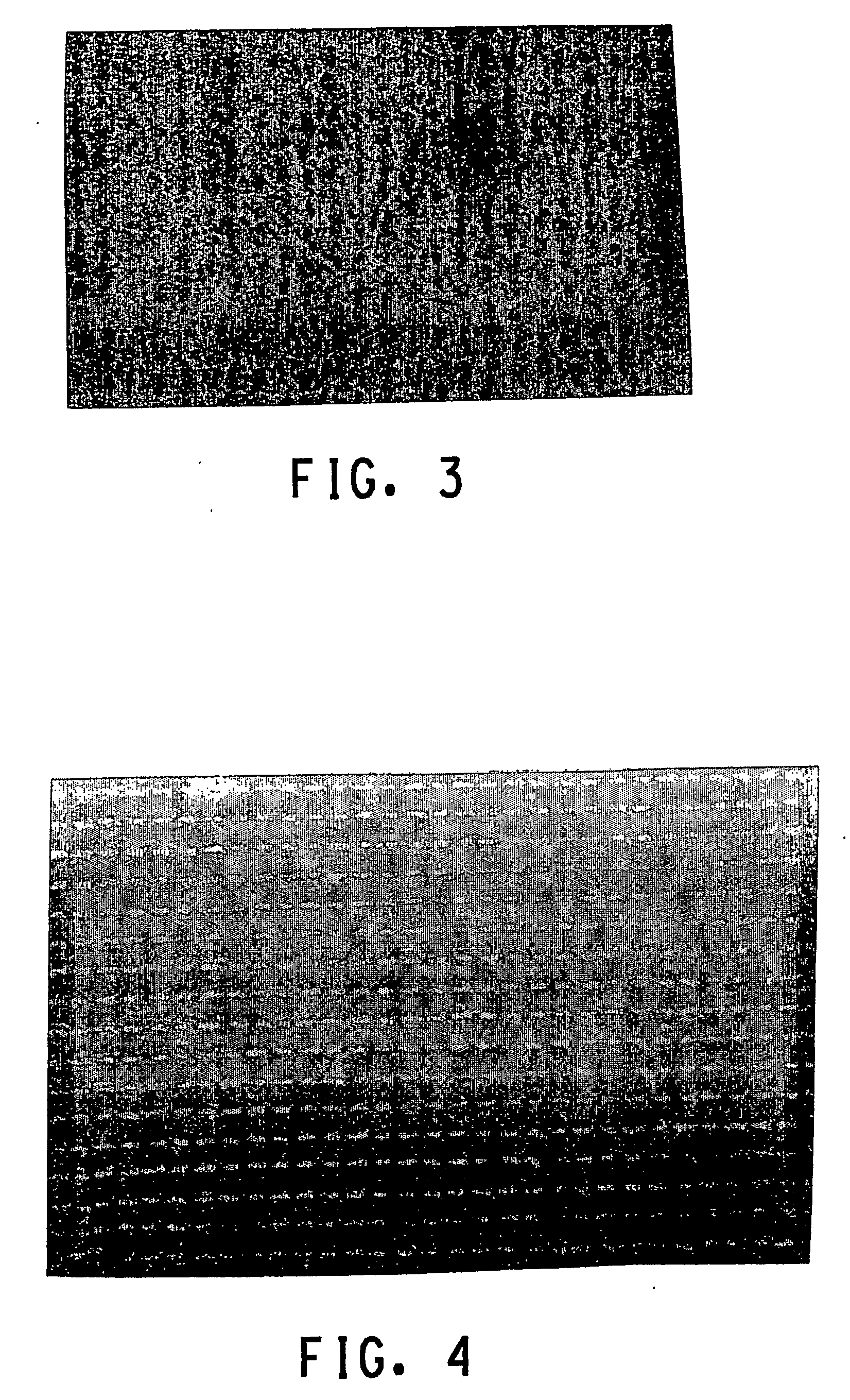Stitchbonded fabric
a non-woven fabric and stitching technology, applied in the field of stitching bonding non-woven fabrics, can solve the problems of degrading spandex, difficult manufacturing conditions and product control, and laminated natural leather
- Summary
- Abstract
- Description
- Claims
- Application Information
AI Technical Summary
Problems solved by technology
Method used
Image
Examples
example 1
[0050] A greige stitchbonded nonwoven fabric was made under the knitting conditions shown in Table 1 using a bicomponent yarn of poly(ethylene terephthalate) and poly(trimethylene terephthalate) on the front guide bar, a false-twist textured yarn primarily of poly(ethylene terephthalate) on the back guide bar, and a polyester spunbonded nonwoven.
TABLE 1Stitchbonded Nonwoven Fabric Knitting Conditions.Knitting machineLiba RACOP2: 12 gauge, 130 inchGuide barsfront barback barnonwoven fabricfeederMaterialPY92WTToyobo Type 6201Threadingfull setfull setConstruction1-0 / 4-51-2 / 1-0Runner length (cm / rack)55026053Courses on machine 23.7(courses / inch)
[0051] The front bar stitch is sometimes called a ‘velvet’ stitch, and the back bar stitch is sometimes called a ‘tricot’ stitch. The greige fabric was then subjected to the conditions shown in Table 2 to give a preferred embodiment of the stitchbonded fabric of the invention, in which, on a surface of the stitchbonded nonwoven, the polyester bi...
PUM
| Property | Measurement | Unit |
|---|---|---|
| Force | aaaaa | aaaaa |
| Fraction | aaaaa | aaaaa |
| Fraction | aaaaa | aaaaa |
Abstract
Description
Claims
Application Information
 Login to View More
Login to View More - R&D
- Intellectual Property
- Life Sciences
- Materials
- Tech Scout
- Unparalleled Data Quality
- Higher Quality Content
- 60% Fewer Hallucinations
Browse by: Latest US Patents, China's latest patents, Technical Efficacy Thesaurus, Application Domain, Technology Topic, Popular Technical Reports.
© 2025 PatSnap. All rights reserved.Legal|Privacy policy|Modern Slavery Act Transparency Statement|Sitemap|About US| Contact US: help@patsnap.com



